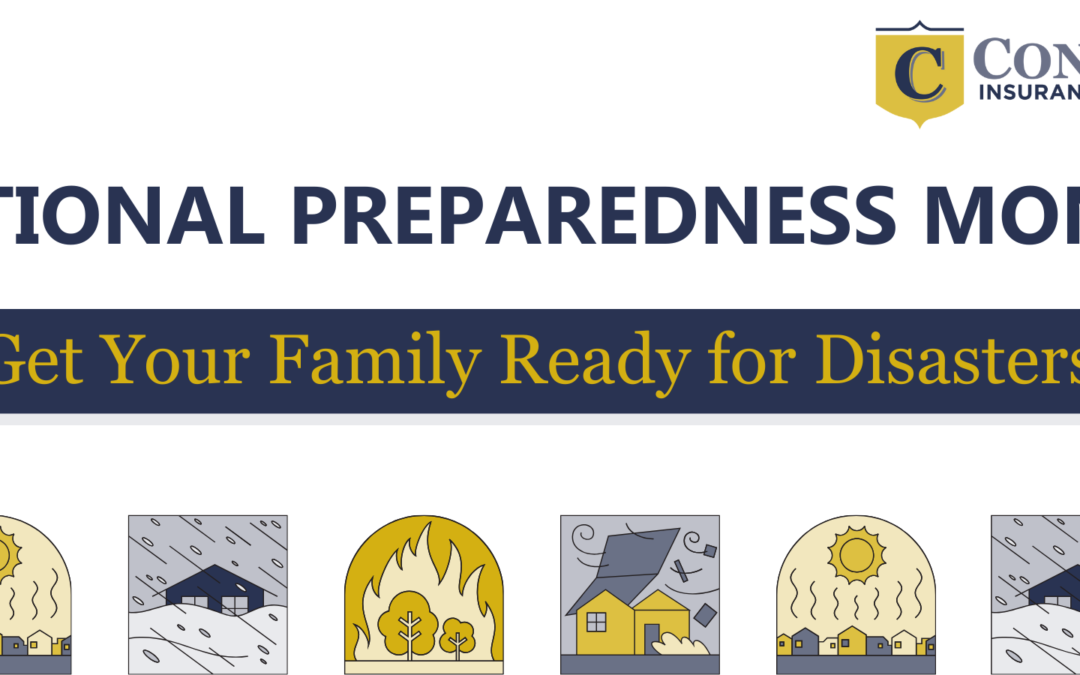With extreme weather becoming increasingly common, September’s National Preparedness Month is a crucial time to plan. This year’s theme, “Start a Conversation,” encourages having open discussions about emergencies with your household, including how to protect your home from storm damage and ensure you have adequate home insurance coverage.
- Set aside a time when everyone is calm and relaxed.
- It may help to hold the discussions over a set time period, so decisions aren’t rushed, and people feel more comfortable talking about the topic.
- Talk about steps you have taken to prepare and encourage others to ask questions about preparedness actions that might work for them.
As a jumpstart for your family’s preparedness actions, we’ve collected disaster-specific tips that affect Midwestern states the most from the Federal Emergency Management Agency (FEMA).
Preparation:
- Snowstorms: Keep your home warm with extra fuel and a gas heater. In your car, pack antifreeze, a scraper, and emergency supplies in the event of being stranded during a storm.
- Wildfires: Get air quality alerts with airnow.gov for local air quality reports. Replace the HVAC filters in your home every three months. Make your home fire-resistant with conscientious landscaping and cleaning out gutters.
- Heat Waves: Find cooling shelters and stockpile water. Learn the signs of heat-related illnesses like confusion, profuse sweating with red skin, exhaustion, and muscle aches.
- Tornadoes: Get familiar with your community’s tornado warning system. Designate your tornado shelter like a basement or storm cellar. If those aren’t options, choose a small interior room (without windows) on the lowest level of your home.
Emergency Supplies:
Gather essentials like water (one gallon per person per day), non-perishable food, a first-aid kit, medications, flashlights, batteries, and a radio. Pack extra clothes, documents, and a grab-and-go bag for evacuation.
Additional Tips:
- Download the FEMA app for weather alerts.
- Learn emergency plans for your workplace and kids’ schools in case an emergency happens when you’re not home.
- If someone in your home has special needs, inform your local police and fire departments. If you have pets, make arrangements for them. Most community shelters won’t allow animals (other than service animals).
- Get CPR/first-aid training. Check the American Red Cross website for training courses near you.
- Create a home inventory for insurance claims. Home inventory apps like Encircle, Itemtopia, or Nest Egg help you categorize your possessions and allow you to scan bar codes and QR codes and upload photos and videos.
- Review your insurance policies with your agent. They can help you determine what types of coverage you need and how much.

